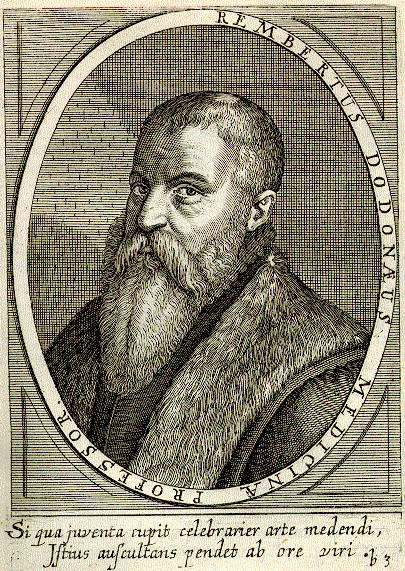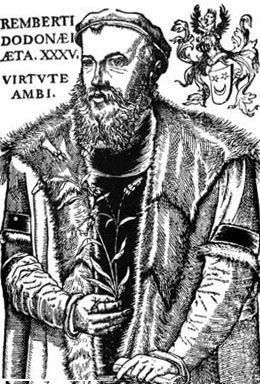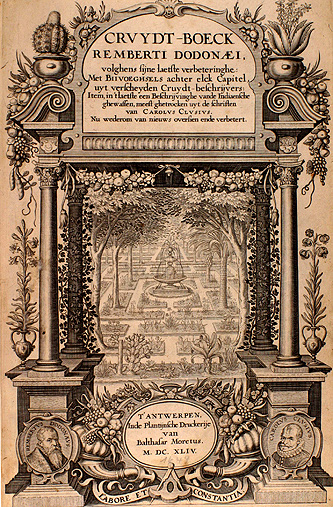<Back to Index>
- Physician Rembert Dodoens, 1517
- Poet Giacomo Taldegardo Francesco di Sales Saverio Pietro Leopardi, 1798
- Generaloberst Ludwig August Theodor Beck, 1880
PAGE SPONSOR



Rembert Dodoens (29 June 1517 – 10 March 1585) was a Flemish physician and botanist, also known under his Latinized name Rembertus Dodonaeus.
Dodoens was born in Mechelen. In 1530 he began his studies in medicine, cosmography and geography at the University of Leuven, where he graduated in 1535. He established himself as a physician in Mechelen in 1538. He married Kathelijne De Bruyn(e) in 1539. He had a short stay in Basel (1542 – 1546). He turned down a chair at the University of Leuven in 1557. He equally turned down an offer to become court physician of emperor Philip II of Spain. He became the court physician of the Austrian emperor Rudolph II in Vienna (1575 – 1578). He then became professor in medicine at the University of Leiden in 1582, and remained there until his death.
Dodoens' herbal Cruydeboeck with 715 images (1554) was influenced by that of Leonhart Fuchs. He divided the plant kingdom in six groups. It treated in detail especially the medicinal herbs, which made this work, in the eyes of many, a pharmacopoeia. It was translated first into French in 1557 by Charles de L'Ecluse (Histoire des Plantes), into English (via L'Ecluse) in 1578 by Henry Lyte (A new herbal, or historie of plants), and later into Latin in 1583. In his times, it was the most translated book after the Bible. It became a work of worldwide renown, used as a reference book for two centuries.
Dodoens's last book, Stirpium historiae pemptades sex (1583) was the Latin translation of his Cruydeboeck. It was used as a source by John Gerard for his Herball.
Dodoens is commemorated in the plant genus Dodonaea, which was named after him by Carolus Linnaeus.